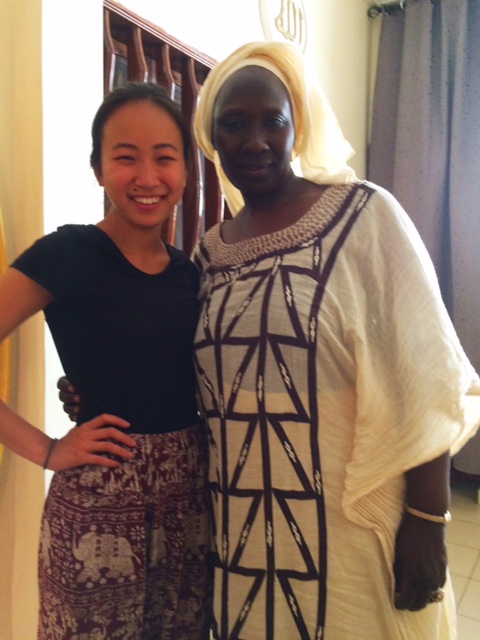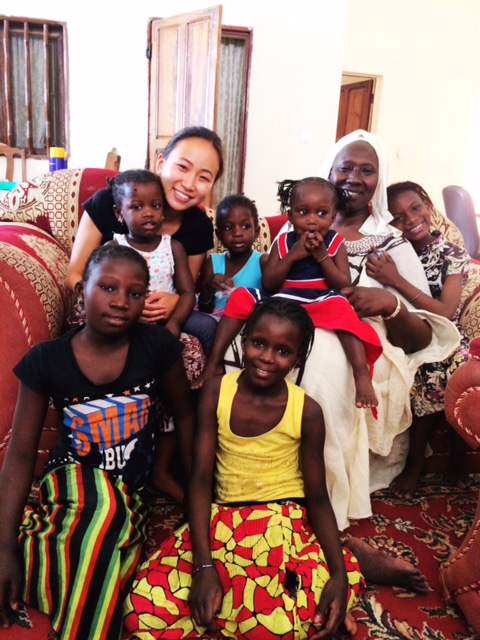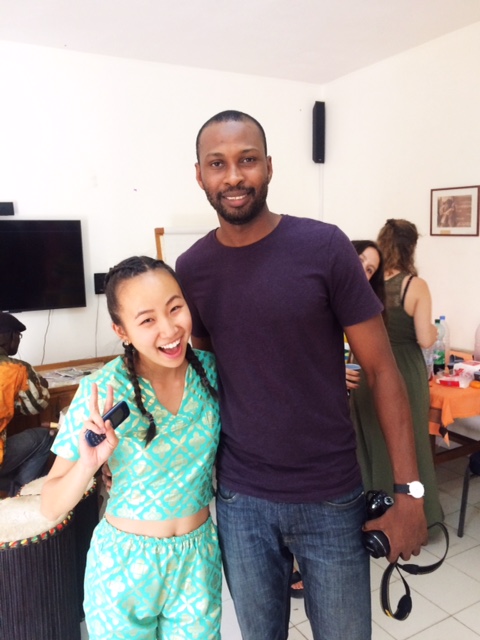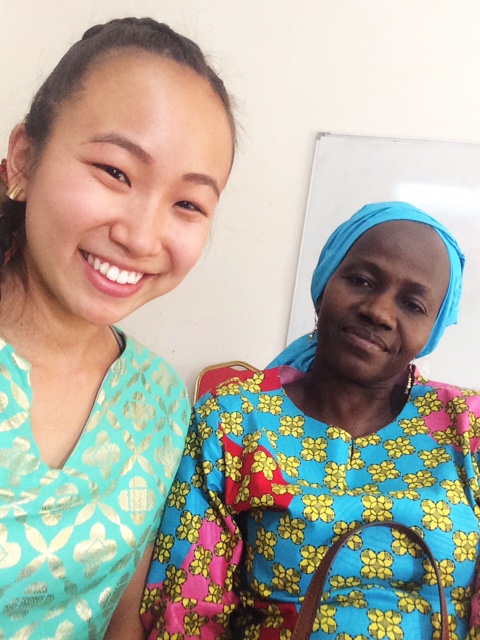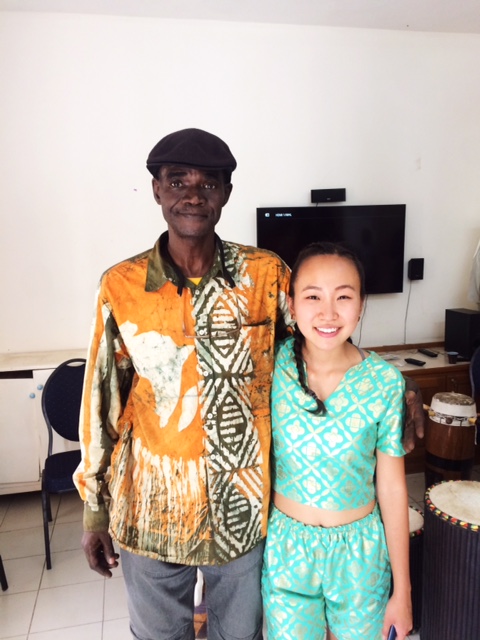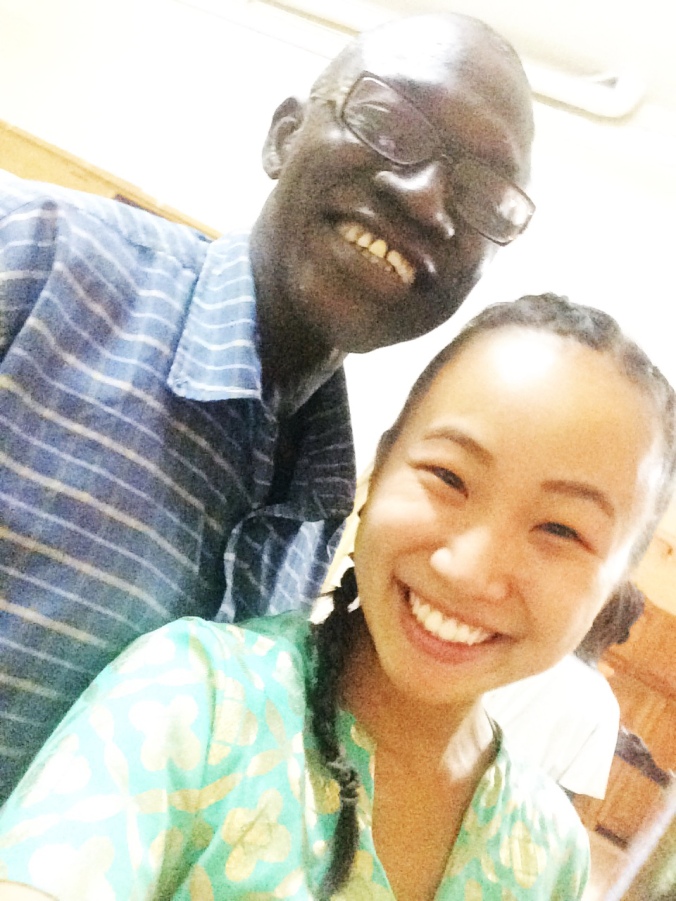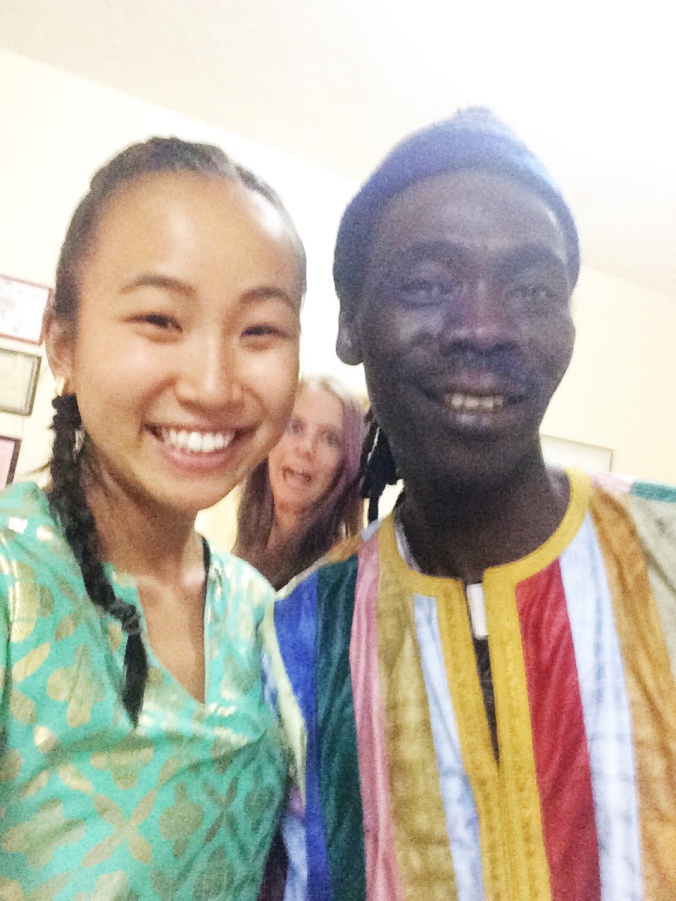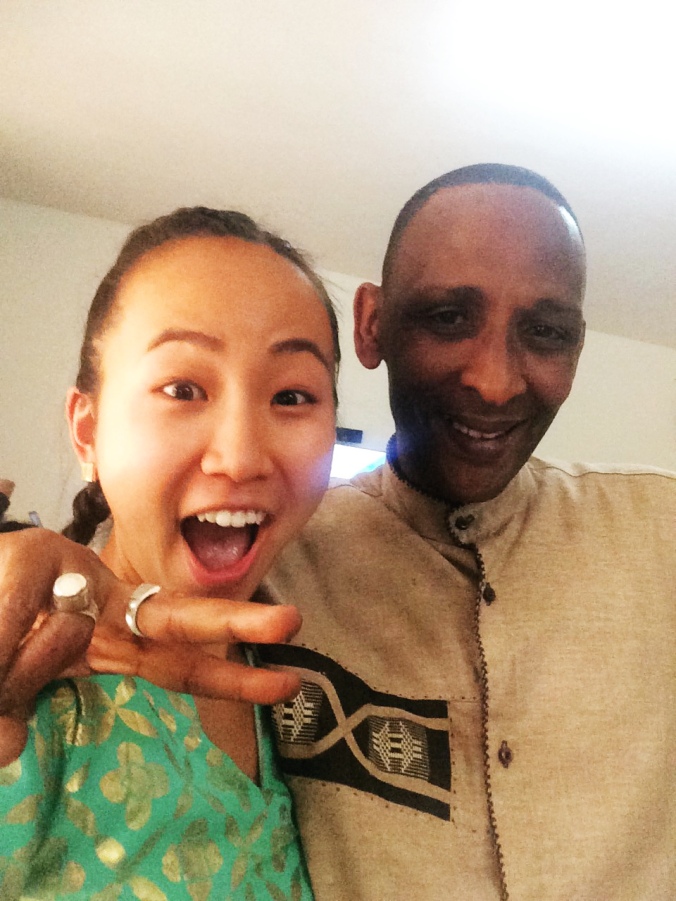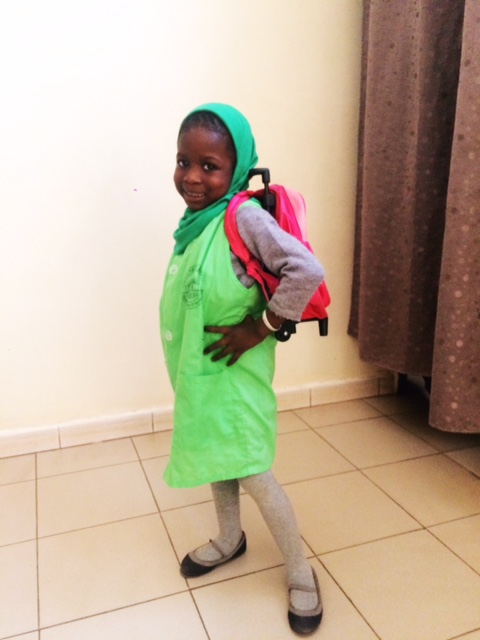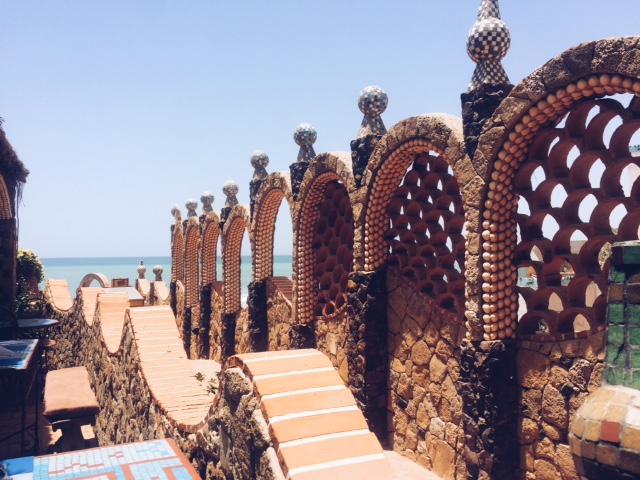lutte: (French) a battle or a wrestling match, but in Senegal specifically refers to the traditional Senegalese wrestling
The first sign that today is the day of la lutte is when our bus rolls into Dakar from the south, towards the SICAP Baobab quartier (neighborhood) and passes the stadium. At least a hundred, if not two hundred people—nearly all men—are packed into chaotic and testosterone-fueled lines that barely resemble lines, inching forward into the stadium with anticipation and excitement. La lutte, says our driver definitively as he forces our way through the throng of spectators on either side of the road. When I get home, I will find my whole family crowded around the downstairs television.
The best comparison I can think of for the lutte’s position in Senegal is sumo wrestling in Japan or the luchadors in Mexico, since it is half a sport and half cultural heritage. Even though it is broadcast on the main news channel and clearly has a competitive hunger, the lutteurs do not even vaguely resemble the modern American sports complex.
Real lutteurs, like the ones on the screen today, have the body of an NFL linebacker, with huge, oxen-like thighs and huge, round bellies. They look like they would make excellent pillows if not for a clearly muscley sturdiness. Their rounded and heavy bodies are accentuated by the fact that they wear nothing but tiny cloth diaper-like shorts and gris-gris, the amulets found in West Africa and said to bestow their wearers with luck. These amulets are usually little leather cubes on strings laced around the lutteurs’ chubby biceps and hulking calves and under their big stomachs and looped over their shoulders and between their pendulous pectorals, as if to point out, in case you didn’t already know, what big guys they are.
The rules for the lutte are simple and more similar to mixed martial arts than boxing, because in fact there are nearly no rules as far as I can figure out. The only goal is to get your opponent on the ground, with either his two shoulders or his hands and knees in the dirt.
The main match tonight is between two famous lutteurs that everyone knows, Ness and Sa Thies. I know that they are famous because shortly after the match has finished my brother’s friend Ibou walks in and says, “Ah, Ness and Sa Thies!” the way an American might say “Ah, Michael Jordan!” when walking in on a basketball game.
The match itself is over in a matter of seconds. After a lot of posturing, the two huge men go at each other like linebackers, gripping each other and spinning around and throwing in what punches they can until finally Sa Thies gets one arm around Ness’s neck and the other around his waist and swings his opponent to the ground. Sa Thies looms over Ness, who has both his hands planted in the dirt and his feet holding his body above the ground, and then Sa Thies leans in and throws in one hard punch to Ness’s gut and the big lutter collapses to the ground.
Nene goes wild, screaming. Sa Thies! Sa Thies! She runs around the living room and slaps my knee and slaps Baba’s knee and slaps Adnan’s knee, clearly thrilled by the result. It was only nine seconds! What a match! She screams so loudly that my yaay comes down to watch, which is no problem since the channel goes on to show the replay nearly ten times, in slow motion, with heightened commentary in Wolof.
There is one image from the replays that I see again and again and cannot get out of my mind. After Sa Thies’s decisive win, he sprints off and away to his hype men, who shower him with praise for the news camera interviews. However, it is at this moment that the camera cuts back to Ness. He sits back up, kneeling, his huge belly yellow from the dirt. Slowly, he raises a hand coated in yellow dirt to his face and touches his lips with one finger, as if he needs to make sure that the dirt is really on it. The look on his face is one of utter bewilderment, as if he cannot believe what has happened in those few seconds and why is he on the ground all of a sudden?
Later on, I realize why Ness’s face has stuck with me all day. The look on his face is nearly exactly the one I feel like I have much of the time in Senegal.
